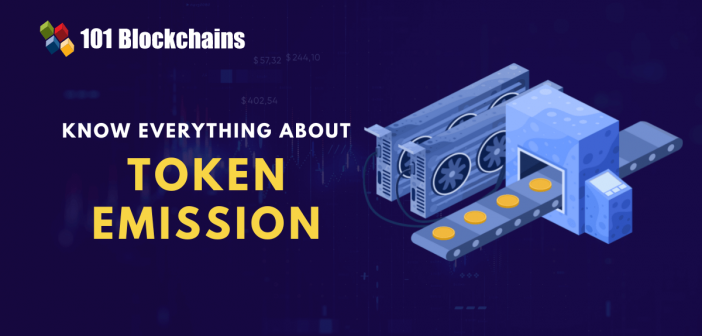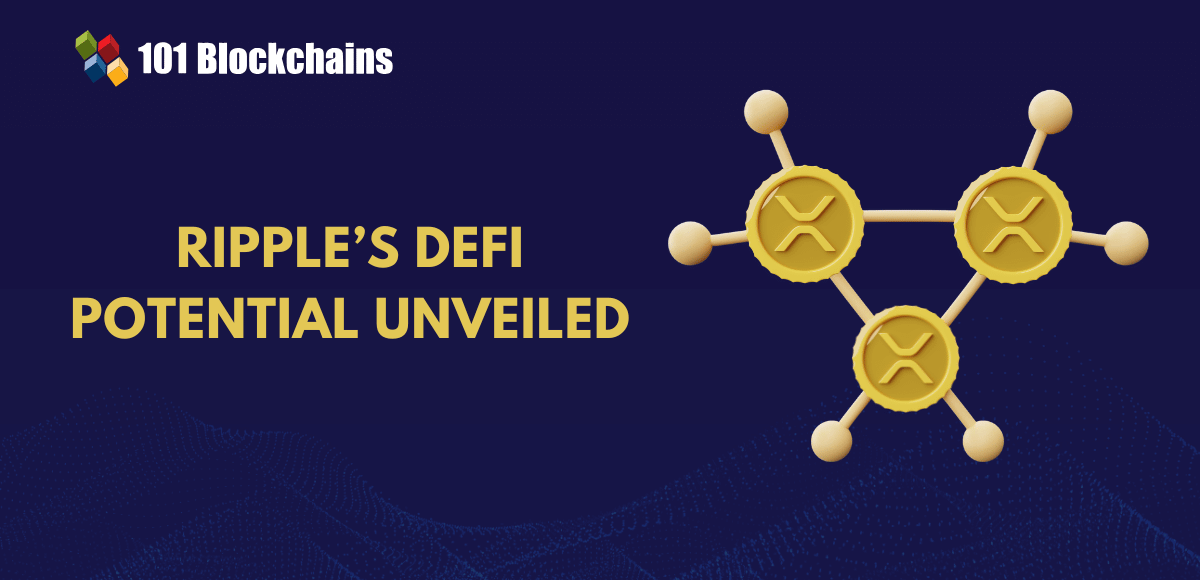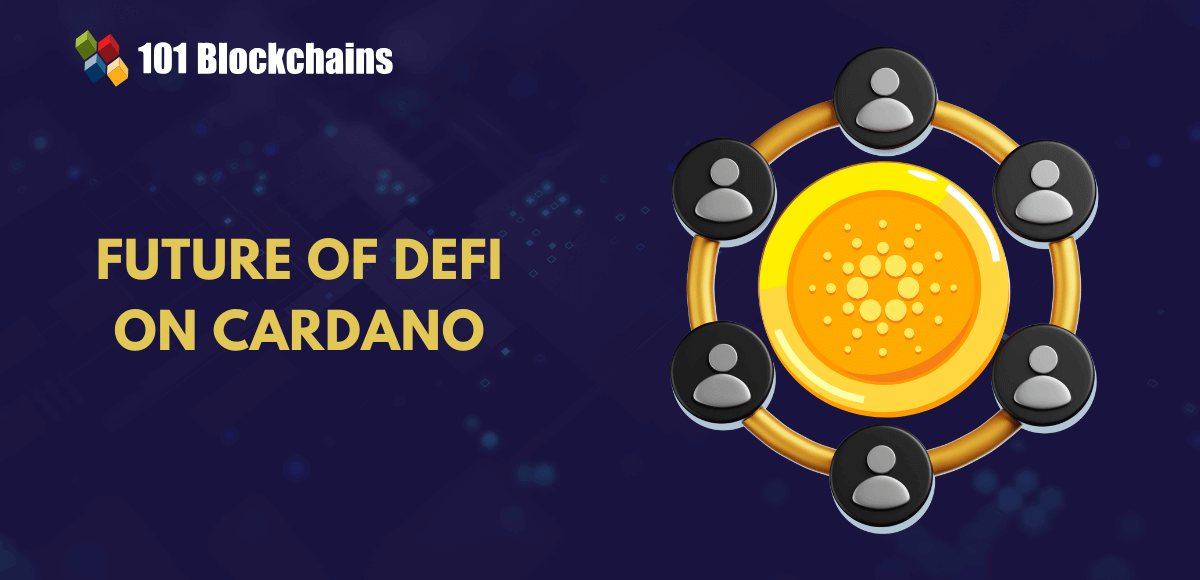Learn how blockchain truly works, master key definitions, and uncover what makes smart contracts so "smart." Dive into the fundamentals, gain valuable insights, and start your blockchain journey today!

- Decentralized Finance
James Howell
- on June 09, 2023
The Importance of Token Emissions for investing in DeFi projects
Bitcoin was only the beginning of a massive revolution that has proliferated into an influential industry. Cryptocurrencies showed the world a new avenue for using decentralization to their advantage and improving accessibility to financial services. Blockchain technology gained significant levels of momentum in terms of innovation along with the growth of cryptocurrencies and tokens. Interestingly, blockchain has led to democratization of the financial services industry through DeFi.
Among the many terms related to DeFi, the importance of token emissions in DeFi is a crucial requirement for understanding the future of DeFi. How do token emissions influence DeFi projects? Token emissions have been described by different terms, including emissions, emission rate, and emission schedule or emission curve. The following post helps you understand the importance of token emissions and how DeFi projects should structure their token offerings.
Want to learn and understand the scope and purpose of DeFi? Enroll Now in Decentralized Finance (DeFi) Course
State of Cryptocurrency and DeFi
The first thing on your mind about token emissions would focus on the reason to learn about them. Why should you learn about token emissions, cryptocurrencies and DeFi? Before you learn about token emissions in crypto, you should find some statistics about the adoption of cryptocurrencies and DeFi. As of now, there are more than 295 million cryptocurrency users all over the world.
More than $59.6 billion worth of digital assets has been added to crypto investment funds. Around 33 new cryptocurrencies arrive on the market every week. On top of it, transaction volumes on Binance amount to more than $14.39 billion in 24 hours. Some reports have also suggested that international B2B transactions through blockchain could reach a volume of $1.7 billion by 2025.
The next important term regarding token emissions is DeFi. Decentralized finance has emerged as a formidable innovative milestone in ensuring transformation of financial services. You can find answers to “How do token emissions work?” in the DeFi sector by identifying how DeFi is performing now. As of January 2023, the total number of unique addresses involved in purchasing or selling DeFi assets amounted to almost 6.6 million.
The TVL of DeFi protocols in November 2022 was almost $55 billion. Market reports have pointed out that DeFi market could achieve a market capitalization of almost $67.4 billion by 2026. Some of the big names in DeFi, such as Uniswap, Compound, Curve Finance and Maker DAO, have opened up many favorable opportunities for accessing financial services. The trading volume across decentralized exchanges crossed $850 billion in 2022.
Want to explore in-depth about DeFi protocol and its use cases? Join the Standard & Premium Plans and get free access to Decentralized Finance (Defi) Course- Intermediate Level Now!
Importance of Tokenomics in Crypto and DeFi
The numbers about cryptocurrencies and DeFi prove that blockchain has given new definitions for the term ‘token.’ Almost every DeFi project comes up with new tokens, distributing them at will among early-stage investors. At the same time, questions like ‘What are emissions in DeFi?’ offer reasons for learning about tokenomics.
Tokenomics is a combination of tokens and economics, which define the economics underlying crypto tokens. Why are tokenomics important? Tokenomics of a DeFi project help in defining important attributes of the project, and investors evaluate different aspects of the tokenomics of DeFi project.
Token functionality, objectives, emissions schedule and allocation policy, are the crucial attributes in the tokenomics of a crypto or DeFi project. You can find questions like “What is token burning mechanism?” in discussions about crypto and DeFi projects. Tokenomics are a crucial highlight in the crypto ecosystem, which can help projects in ensuring safety against bad agents. In addition, tokenomics helps in creating trust alongside developing strong ecosystems with long-term sustainability.
Strong tokenomics indicators of a DeFi project could help in supporting the value of tokens over a longer period of time. It can help in providing incentives to early adopters alongside ensuring better control over inflation rate of tokens. As a result, tokenomics can serve a vital role in driving the sustainable growth of a crypto token or DeFi project over a longer duration of time.
Want to become a Cryptocurrency expert? Enroll Now in Cryptocurrency Fundamentals Course
Crucial Metrics for Tokenomics
If you want to learn about token emissions, you should familiarize yourself with different metrics associated with tokenomics. The tokenomics model of a crypto token or DeFi project can provide you with a better impression of the working of token emissions. Here are the key highlights investors look for in a DeFi project.
-
Allocation and Token Distribution
The first thing about a DeFi project other than the token emissions refers to allocation and distribution of tokens. Apart from token emissions in DeFi, allocation and distribution of tokens takes the first priority for teams. Token allocation and distribution can involve division of tokens between different departments, including marketing and development. On the other hand, some of the tokens are allocated to the treasury, which can be issued in times of requirement.
-
Supply and Emissions
The next crucial aspect in the description of tokenomics attributes refers to the supply and emission schedule. You can find answers to “What are emissions in DeFi?” with the rate at which a crypto or DeFi project launches new tokens in the market. In addition, you must also learn about supply of a token, which includes three different metrics.
Circulating supply indicates the number of tokens that are in circulation at present. Total supply indicates the number of tokens that have been created and burned and the circulating supply combined. Max supply refers to the maximum number of tokens the project could ever generate.
The curiosity regarding questions like ‘How do token emissions work?’ can lead you to assumptions about supply of a token. Healthy tokens would have a steady increase in circulating supply. However, it is also important to understand that token emissions should not be faster or more frequent. Why? DeFi projects have to safeguard their value over the long term.
-
Market Capitalization
The market capitalization of a DeFi project is also closely related to the token emissions of the project. Market capitalization is one of the important metrics which showcases the safety of a project. Generally, projects with higher market capitalization and lower circulating supply have better chances of becoming more valuable in the future.
-
Token Model
The next important aspect in discussions about token emissions and “What is token burning mechanism?” would point to model of the token. Some tokens feature a dual token model, with a security token and a utility token. Examples of security tokens include governance tokens, while utility tokens serve as transaction tokens on the platform.
Excited to learn the fundamentals of tokenization and its practical implications, Enroll Now in Tokenization Fundamentals Course
Definition of Token Emissions
You will find the same definition for token emissions in almost every discussion on tokenomics. Token emissions are an integral element of tokenomics alongside circulating supply, token utility and governance. The easiest definition for token emissions in crypto points to the rate with which new tokens are developed and released into the circulating supply. New tokens are generally distributed alongside block rewards, provided to validators or miners for securing the blockchain. Therefore, you can notice how the consensus mechanism is an important highlight in the working of token emissions.
During the initial stages of Bitcoin, miners received around 50 Bitcoin for every block validated, ending up in emissions of 7200 BTC per day. Does Bitcoin continue emitting the same number of tokens today? Now, the Bitcoin protocol rewards 6.25 BTC for every block, thereby implying a drop in token emissions. Does it help Bitcoin? Bitcoin has set a maximum supply limit of 21 million BTC, and the strict emission schedule helps it maintain value.
Want to know about the working process and infrastructure of bitcoin? Check the presentation for quick overview on What is Bitcoin and How Does it Work
Variants of Token Emissions
The best way to understand answers to “How do token emissions work?” would point at the different variants of token emissions. You can find different types of token emissions according to specific design of the DeFi project and its objectives. The general types of token emissions include the following options.
-
Fixed Token Emission
The fixed token emissions point to emitting tokens at a fixed rate over the course of time. In such cases, the total supply of tokens is fixed, and new tokens must be released at a predetermined rate. Bitcoin is one of the best examples of fixed token emissions as it features a predetermined emission rate and a maximum supply of 21 million BTC. Interestingly, the predetermined emission rate of Bitcoin decreases over the course of time with the halving process.
-
Variable Token Emission
The variable token emissions point at token emission rates, which you can modify over the course of time according to certain conditions and triggers. You can find questions like “What is token burning mechanism?” useful for understanding variable token emissions. Let us assume the example of stablecoins such as Tether, which creates new tokens when user deposits $1 in the Tether or USDT reserve. The variable token emission calls for classification of variable token emission into two sub-categories, deflationary emissions and inflationary emissions.
-
Deflationary Emissions
Deflationary emissions are generally associated with burning tokens, with the total supply decreasing gradually with time. The tokens are permanently removed from circulation through burning mechanisms. What is the purpose of such token emissions in DeFi projects?
Deflationary emissions can offer significant advantages for increasing the value of tokens by reducing the supply. The example of BitTorrent Token or BTT is the best example of a deflationary emission. Every time anyone uses BTT to purchase content and services on BitTorrent, the platform burns the BTT tokens.
-
Inflationary Emissions
The inflationary model is the complete opposite of deflationary token emissions in crypto projects. Inflationary emissions feature continuous growth in total supply over the course of time, which can lead to decreasing value in case of weak market demand. Inflationary tokens are almost similar to fiat currency, considering the fact that central banks could increase the supply to meet demand with new currency units.
One of the popular examples of tokens with inflationary emissions is Doge, with a fixed reward of 10000 Doge for each block. It does not have a fixed maximum supply, and inflation rate for Dogecoin could change according to the demand for the token.
-
Dynamic Emissions
The most effective alternative to fixed token emissions in DeFi projects points to dynamic emissions, which can change according to desired requirements. Dynamic emissions can serve useful support in addressing many objectives, including incentives for desired behavior, adaptability to changes in market conditions and maintenance of cryptocurrency value.
Cryptocurrencies with dynamic emissions could increase emission rates during the time of low demand for encouraging adoption alongside improving the token value. Similarly, dynamic emissions can work on reducing the emission rate during higher demand to reduce possibility of oversupply.
However, the success of a DeFi project with dynamics emissions depends on different factors. The most important factors which can influence the success of dynamic emission models include the particular conditions and triggers which help in adjusting the emission rate alongside overall token demand. You can find more insights on “How do token emissions work?” in the case of dynamic emissions with an example.
One of the trusted examples of token emissions points at Compound, which offers a popular DeFi lending platform. Compound includes a native token, COMP, which helps in protocol governance and transaction fee payments. The Compound protocol evaluates different factors for adjusting the token emissions of COMP. The factors include total supply, demand and overall adoption of the Compound protocol.
The importance of token emission models is clearly evident in how they influence supply and demand of tokens. It is important to move beyond the narrative of tokenomics and fundamental value of crypto tokens and DeFi projects. You need to understand the general principles of token emissions to leverage them to your advantage.
Catch up on the latest trends in decentralized finance (DeFi) and its connection to crypto with DeFi Skill Path
Conclusion
The widespread adoption of cryptocurrency and DeFi spells good news for decentralized ecosystems and stakeholders. At the same time, token emissions in DeFi are emerging as a prominent highlight in the DeFi landscape. How can DeFi users evaluate a specific protocol and its native token?
Tokenomics help in breaking down the performance of a token into different factors, such as supply, token allocation, distribution and market capitalization. However, token emissions in crypto are also a formidable factor for determining capability of DeFi projects for sustaining long-term value. Learn more about DeFi projects and tokenomics for diving deeper into the ways to design your token emissions right now.
*Disclaimer: The article should not be taken as, and is not intended to provide any investment advice. Claims made in this article do not constitute investment advice and should not be taken as such. 101 Blockchains shall not be responsible for any loss sustained by any person who relies on this article. Do your own research!



![30+ Best Decentralized Finance Applications [Updated] best decentralized finance (DeFi) applications](https://101blockchains.com/wp-content/uploads/2020/10/decentralized-finance-applications.png)

